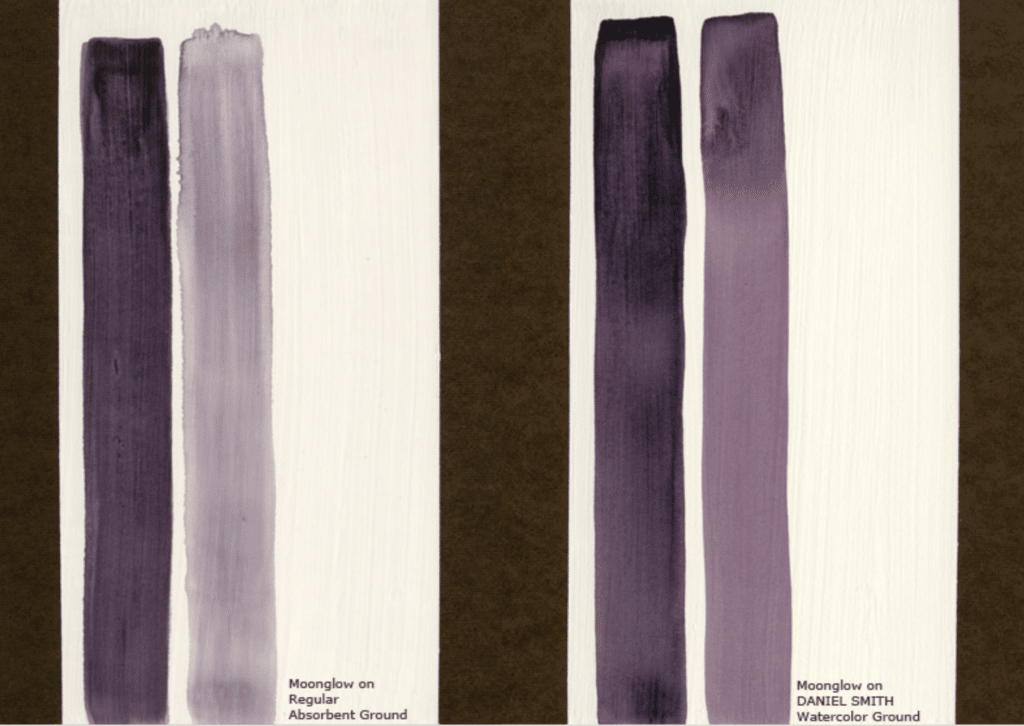DANIEL SMITH Watercolor Ground was developed to simulate the look and feel of cold-press watercolor paper on other surfaces. Watercolor paper is sized, allowing pigment to remain on top of the surface rather than soaking in. This is where you’ll notice a big difference when you compare DANIEL SMITH Watercolor Ground with other absorbent ground that you may have tried.
Take a look at these two sheets of dark brown hardboard that illustrate this difference. On the left side, we applied two coats of a standard absorbent ground and allowed it to cure for 24 hours. We then applied a mass tone wash of one our very beautiful, multi-pigment watercolors – Moonglow. We also diluted our pigment 50% with water and painted out another line of color beside the mass tone.
As you can see, Moonglow has lost some of its luster in both washes. With regular absorbent ground, it’s very difficult to pre-wet the surface, which restricts wet-on-wet watercolor techniques. It’s also tricky to lift color without completely removing the pigment.

In comparison, the hard board on the right was prepared with two coats of DANIEL SMITH Watercolor Ground. After curing, the surface behaved much more like paper and accepted pre-wetting. Our mass tone wash appears richer and retained the clarity of the Moonglow pigments. Also note how much brighter the 50% wash is compared to the left side. DANIEL SMITH Watercolor Ground also allowed natural granulation to occur.
Watercolor Ground is also the perfect medium for making crafts and handpainted gifts with your favorite DANIEL SMITH Watercolors – try it on a variety of surfaces like wood, plastic, glass, plaster, ceramic and more!





